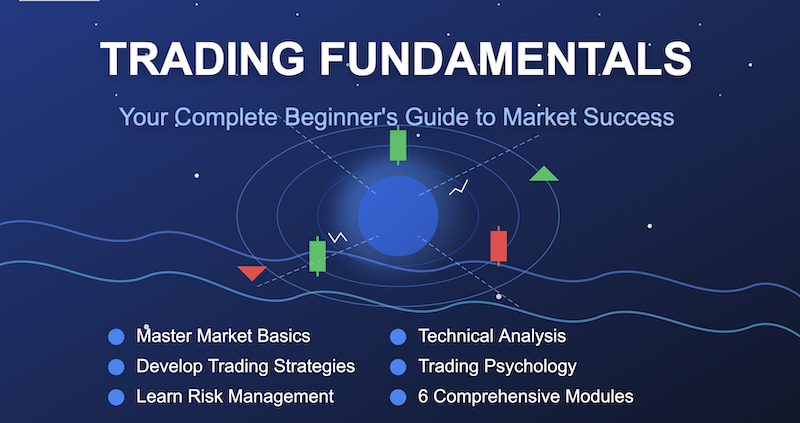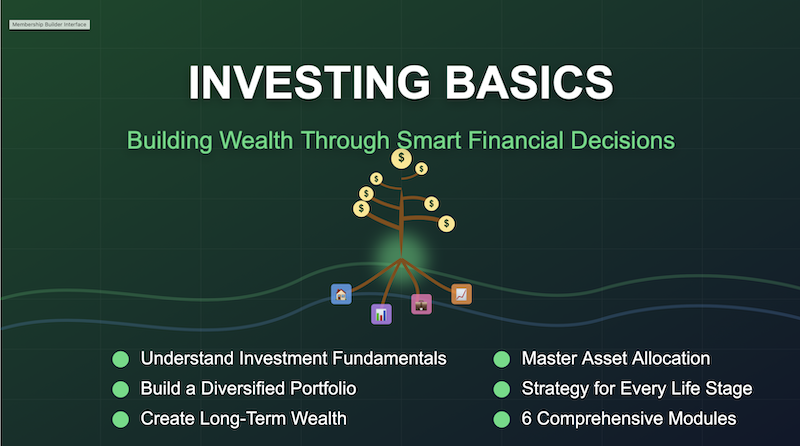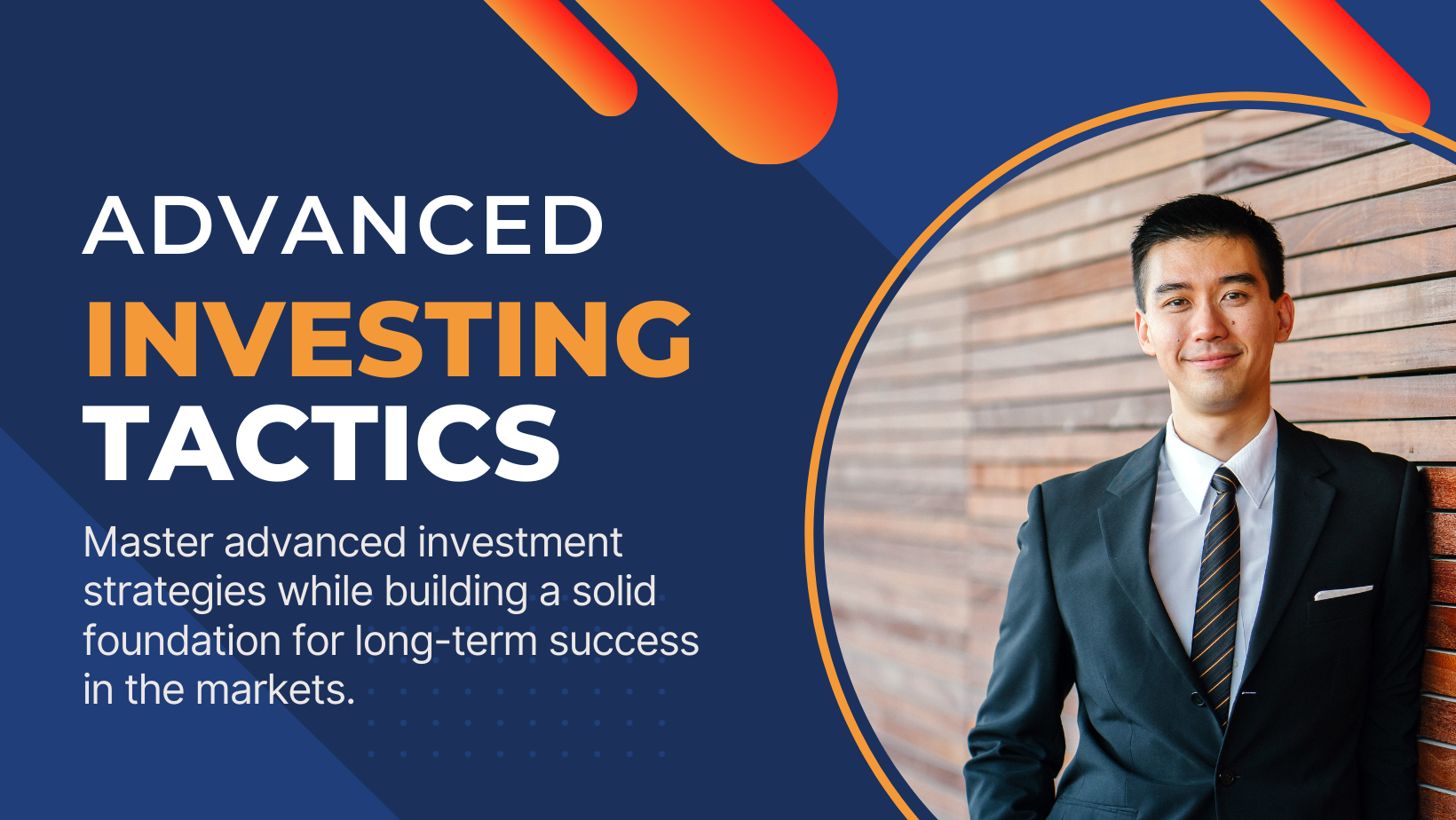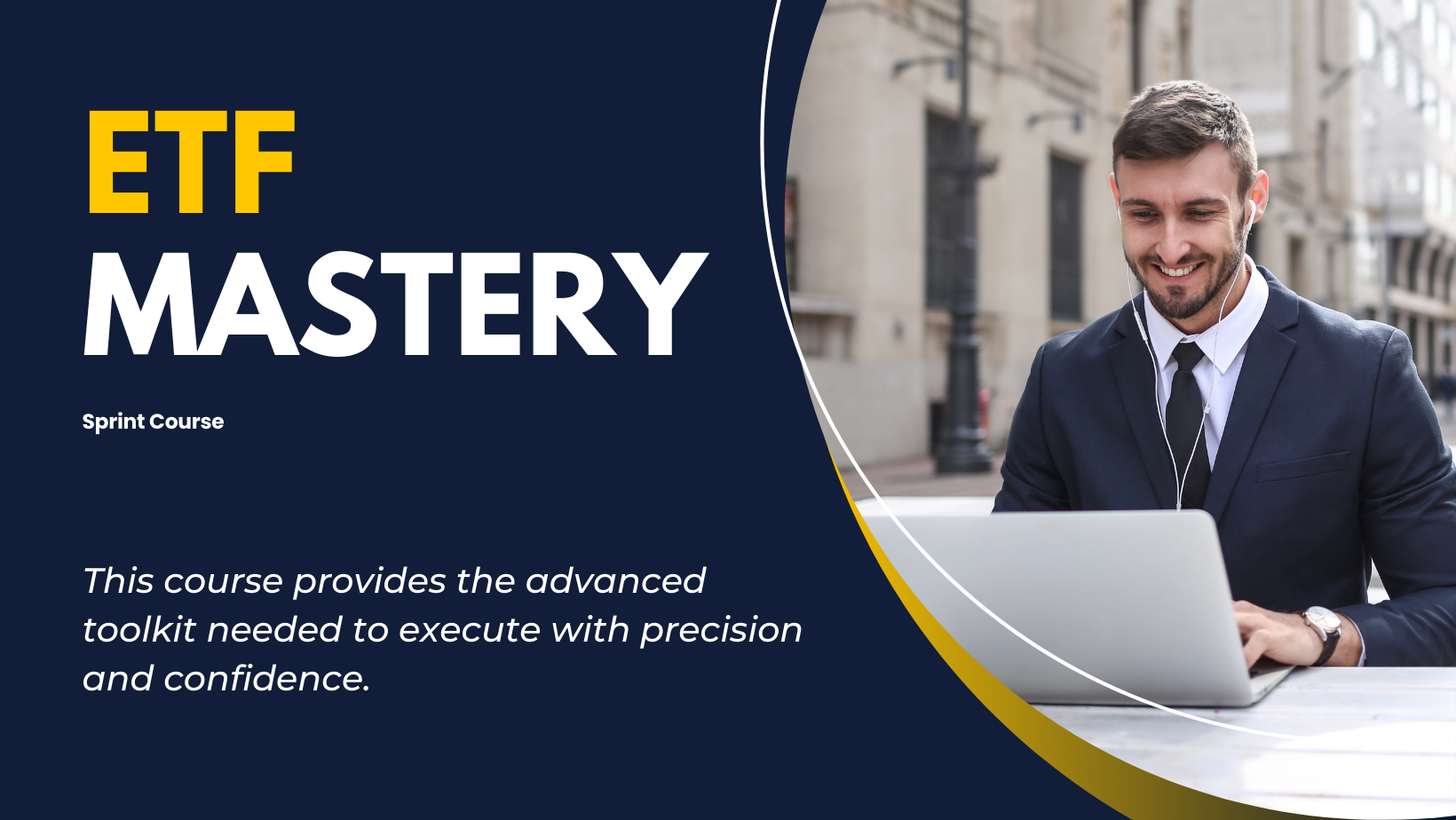5 Investing Truths That Could Transform Your Financial Future
25 min read
Published: June 8, 2025, 17:17 a.m. ET
Key Points
⚡Compound Interest is King 📈 Starting early beats investing more later. Someone who starts at 25 with $500/month will accumulate more than
someone starting at 35 with $750/month - time is more powerful than amount.
⚡ Volatility = Opportunity 🎢 Markets drop 10%+ every 1.5 years on average, but long-term investors are rewarded for staying the course. Don't try to time
the market - it consistently hurts returns.
⚡ True Diversification Goes Beyond Stocks 🌍 Owning multiple stocks isn't enough - you need diversification across asset classes, geographic regions,
and currencies to reduce real risk.
⚡ Psychology is Your Biggest Enemy 🧠 Behavioral biases and emotional decisions destroy returns. Use systematic approaches like automatic investing
and dollar-cost averaging to remove emotions from the equation.
⚡ Time Horizon Determines Everything ⏰ The longer your investment timeline, the more risk you can take. Young investors can be aggressive with
stocks; those nearing retirement need conservative approaches.
5 Investing Truths That Could Transform Your Financial Future
Understanding the fundamental principles that drive investment success can mean the difference between financial security and struggling to make ends meet in retirement.
While the investment landscape continues to evolve with new products, technologies, and market dynamics, certain timeless truths remain constant drivers of long-term wealth creation.
Executive Summary:
• Compound interest becomes exponentially more powerful with time, making early investing crucial for wealth accumulation
• Market volatility is normal and inevitable, but patient investors are historically rewarded for staying the course
• True diversification requires more than just owning multiple stocks within the same asset class or geographic region
• Behavioral biases consistently undermine investment returns, but systematic approaches can mitigate these psychological pitfalls
• Time horizon is the most critical factor in determining appropriate investment strategy and risk tolerance
AvaTrade offers professionally designed model portfolios
Truth #1: Compound Interest Is Your Most Powerful Wealth-Building Tool
Albert Einstein allegedly called compound interest the eighth wonder of the world, and for good reason. The mathematical reality of exponential growth creates wealth-building opportunities that many investors dramatically underestimate.
Consider two investors: Sarah begins investing $500 monthly at age 25, while Tom waits until age 35 to start investing $750 monthly. Assuming a 7% annual return, by age 65, Sarah will have accumulated approximately $1.37 million despite contributing $240,000 over 40 years.
Tom, despite contributing $270,000 over 30 years, will have only $739,000.
This $630,000 difference illustrates why starting early matters more than contributing larger amounts later.
The additional ten years of compound growth on Sarah's smaller contributions generated significantly more wealth than Tom's higher monthly investments.
The Power of Reinvestment
The true magic of compound interest occurs when investment returns are consistently reinvested rather than withdrawn. Dividend reinvestment plans (DRIPs) and automatic reinvestment options in mutual funds and ETFs harness this power without requiring active management.
According to data from Hartford Funds, reinvested dividends accounted for approximately 69% of the S&P 500's total return between 1970 and 2020. This means investors who spent their dividends rather than reinvesting them missed out on roughly two-thirds of their potential returns.
Maximizing Compound Growth
To maximize compound interest benefits, investors should focus on minimizing taxes and fees that erode returns. Tax-advantaged accounts like 401(k)s, IRAs, and Roth IRAs allow compound growth to occur without annual tax drag.
Additionally, low-cost index funds and ETFs preserve more returns for reinvestment compared to high-fee actively managed funds.The difference between a 0.05% expense ratio and a 1.5% expense ratio may seem small, but over decades, these fees compound in reverse, significantly reducing accumulated wealth.
On a $10,000 investment earning 7% annually over 30 years, the difference in fees alone would cost approximately $67,000 in lost returns.
WATCH LIST
Ready to put time on your side? With AvaTrade's instant account setup, you can begin investing in top companies like Apple, Microsoft, and Google in minutes.
Truth #2: Market Volatility Is Normal and Profitable for Long-Term Investors
Market volatility often triggers fear and panic selling, but historical data reveals that volatility is both normal and ultimately beneficial for long-term wealth creation. Understanding this relationship transforms how investors view market downturns.Since 1926, the S&P 500 has experienced a correction (decline of 10% or more) approximately once every 1.5 years and a bear market (decline of 20% or more) roughly every 3.5 years. Despite these regular setbacks, the index has delivered an average annual return of approximately 10% over this period.
Volatility Creates Opportunity
Market volatility creates opportunities for disciplined investors through dollar-cost averaging and rebalancing. When markets decline, the same dollar amount purchases more shares, lowering the average cost basis. When markets rise, previously accumulated shares appreciate in value.
Research by Vanguard demonstrates that investors who maintained their investment discipline during the 2008 financial crisis and continued making regular contributions saw their portfolios recover and reach new highs by 2013. Meanwhile, investors who stopped contributing or sold during the downturn took significantly longer to recover their losses.
The Cost of Market Timing
Attempting to time market movements consistently costs investors substantial returns. According to DALBAR's Quantitative Analysis of Investor Behavior, the average equity fund investor earned only 7.13% annually over the 20-year period ending in 2019, while the S&P 500 returned 8.20% annually during the same period.
This performance gap primarily results from investors buying high during market euphoria and selling low during market pessimism. Fidelity's analysis of their best-performing accounts found that many belonged to investors who had forgotten about their accounts or had passed away, eliminating the temptation to make emotional trading decisions.
Preparing for Volatility
Successful long-term investors prepare for volatility by maintaining appropriate cash reserves outside their investment accounts and setting realistic expectations about market behavior.
A well-constructed emergency fund prevents the need to sell investments during market downturns, while understanding historical volatility patterns helps investors stay committed to their long-term strategy.
AvaTrade offers professionally designed model portfolios that include optimal allocations to tech leaders like Apple, Microsoft, and Google, balanced with other sectors.
AvaTrade offers professionally designed model portfolios that include optimal allocations to tech leaders like Apple, Microsoft, and Google, balanced with other sectors.
Truth #3: True Diversification Requires More Than Stock Picking
Many investors believe they achieve diversification by owning multiple stocks, but true diversification requires spreading risk across different asset classes, geographic regions, and investment styles. Modern portfolio theory demonstrates that proper diversification can maintain returns while reducing overall portfolio risk.
Beyond Stock Diversification
Owning 20 technology stocks does not provide meaningful diversification because these companies face similar market risks and economic factors. True diversification requires exposure to different sectors, asset classes, and geographic regions that react differently to various economic conditions.
A properly diversified portfolio might include domestic and international stocks, government and corporate bonds, real estate investment trusts (REITs), and commodities. Each asset class has different risk-return characteristics and performs differently under various economic scenarios.
The Correlation Challenge
Diversification effectiveness depends on correlations between different investments. When assets move in the same direction, they provide little diversification benefit. However, when some assets appreciate while others decline, the portfolio experiences reduced volatility.
During the 2008 financial crisis, many investors discovered their "diversified" portfolios weren't truly diversified. Real estate, stocks, and commodities all declined simultaneously, providing limited protection.
However, high-quality government bonds appreciated during this period, demonstrating the value of including non-correlated assets.
Geographic and Currency Diversification
International diversification provides exposure to different economies, currencies, and market cycles. While global markets have become more correlated over time, international stocks still provide diversification benefits, particularly during periods when the U.S. market underperforms.
Emerging markets, developed international markets, and domestic markets each offer different growth prospects and risk profiles.
Currency diversification through international investments can also provide some protection against dollar weakness.
Rebalancing for Optimal Diversification
Maintaining target allocations through regular rebalancing ensures that portfolio diversification remains effective over time. As different asset classes perform differently, portfolio allocations drift from their targets, potentially increasing risk or reducing expected returns.
Systematic rebalancing forces investors to sell high-performing assets and buy underperforming ones, implementing a disciplined "buy low, sell high" strategy.
This contrarian approach can enhance returns while maintaining desired risk levels.
Truth #4: Behavioral Biases Are Your Biggest Investment Enemy
Human psychology consistently undermines investment success through predictable behavioral biases. Understanding these biases and implementing systematic approaches to overcome them can significantly improve long-term returns.
Common Investment Biases
Loss aversion causes investors to hold losing positions too long while selling winners too quickly. This behavior is the opposite of effective investing and results in poor overall performance. The pain of losses feels approximately twice as intense as the pleasure of equivalent gains, leading to suboptimal decision-making.Overconfidence bias leads investors to trade too frequently, concentrate their holdings in familiar companies, and ignore diversification principles. Studies show that individual investors who trade most frequently achieve the worst returns after accounting for transaction costs and fees.Confirmation bias causes investors to seek information that confirms their existing beliefs while ignoring contradictory evidence. This selective information processing can lead to concentrated positions in favored stocks or sectors while ignoring warning signs.
The Herding Mentality
Investors often follow the crowd, buying popular investments after they've already appreciated significantly and selling during market panics. This herding behavior results in buying high and selling low, the opposite of successful investing.
Bubble markets throughout history demonstrate the power of herding behavior. The dot-com bubble of the late 1990s, the housing bubble of the mid-2000s, and various other market manias all featured investors abandoning rational analysis in favor of following the crowd.
Overcoming Behavioral Biases
Systematic investing approaches help overcome behavioral biases by removing emotion from investment decisions. Dollar-cost averaging, automatic rebalancing, and predetermined asset allocation strategies implement disciplined investing regardless of market conditions or emotional responses.
Target-date funds and robo-advisors provide systematic approaches that many investors find helpful for overcoming behavioral biases.
These automated solutions maintain appropriate diversification and rebalancing without requiring active decision-making during emotional market periods.
The Value of Professional Guidance
Financial advisors can provide valuable perspective during emotional market periods, helping investors maintain long-term focus when behavioral biases might otherwise derail their investment strategy.
However, investors should understand advisor compensation structures and potential conflicts of interest.Fee-only financial advisors who charge transparent fees rather than commissions from product sales typically provide more objective advice.
Investors should evaluate advisor qualifications, experience, and investment philosophy before establishing advisory relationships.
Truth #5: Time Horizon Determines Everything
Investment time horizon is the single most important factor in determining appropriate investment strategy, risk tolerance, and expected returns. Understanding how time affects investment outcomes enables better decision-making and improved long-term results.
Risk and Time Relationship
Time horizon directly impacts how much investment risk is appropriate. Longer time horizons allow for greater equity exposure because there's more time to recover from market downturns. Shorter time horizons require more conservative approaches to preserve capital.Historical data shows that stocks have never produced negative returns over any 20-year period since 1926, despite experiencing numerous bear markets and corrections during shorter periods. This historical performance supports higher equity allocations for long-term investors.
Age-Based Allocation Strategies
Traditional investment advice suggests subtracting age from 100 to determine appropriate stock allocation. However, increasing life expectancies and longer retirement periods may require more aggressive allocations to maintain purchasing power throughout retirement.
Modern portfolio theory suggests that even retirees should maintain some equity exposure to combat inflation and extend portfolio longevity.
The specific allocation depends on individual circumstances, risk tolerance, and other income sources.
Sequence of Returns Risk
The order of investment returns matters significantly for investors approaching or in retirement. Experiencing poor returns early in retirement can permanently impair portfolio sustainability, even if subsequent returns are strong.
Strategies to mitigate sequence of returns risk include maintaining cash reserves for early retirement expenses, reducing equity exposure as retirement approaches, and implementing systematic withdrawal strategies that adjust for market performance.
The Flexibility Advantage
Longer time horizons provide flexibility to adjust strategies based on changing circumstances, market conditions, and personal goals.
Young investors can take more risks and make strategic changes without jeopardizing their long-term financial security.
This flexibility enables young investors to pursue higher-growth strategies, invest in volatile but potentially rewarding asset classes, and recover from investment mistakes without permanent damage to their financial future.
Implementing These Truths in Your Investment Strategy
Understanding these five investing truths is only valuable if implemented through concrete actions. Successful investors develop systematic approaches that harness these principles while minimizing the impact of emotional decision-making.
Start with Clear Goals
Define specific financial goals with timeframes and required returns. Whether saving for retirement, a home purchase, or children's education, clear goals enable appropriate strategy selection and progress measurement.
Quantify goals in specific dollar amounts and timeframes rather than vague aspirations. This specificity enables calculation of required savings rates and appropriate risk levels to achieve objectives.
Automate Your Success
Implement automatic investment plans that harness compound interest and remove emotional decision-making from the process. Automatic transfers from checking accounts to investment accounts ensure consistent investing regardless of market conditions or personal circumstances.
Automatic rebalancing and dividend reinvestment further systematize successful investing practices. These automated processes implement disciplined strategies without requiring ongoing attention or decision-making.
Monitor and Adjust
Regularly review portfolio performance and alignment with goals, but avoid making frequent changes based on short-term market movements.
Annual or semi-annual reviews provide sufficient frequency for most investors to make necessary adjustments.Life changes such as marriage, children, job changes, or approaching retirement may require strategy adjustments.
These significant life events provide appropriate triggers for portfolio modifications rather than market volatility or performance concerns.
Stay Educated
Continue learning about investing principles, market history, and personal finance concepts. Education helps investors make better decisions and avoid common pitfalls that undermine long-term success.
Reputable sources include academic research, established financial publications, and educational resources from major investment firms.
Avoid sources that promote get-rich-quick schemes or market timing strategies.
Ready to put time on your side? With AvaTrade's instant account setup, you can begin investing in top companies like Apple, Microsoft, and Google in minutes.
Bottom Line
These five investing truths provide a foundation for long-term investment success:
harness compound interest through early and consistent investing, embrace market volatility as opportunity rather than threat, implement true diversification across asset classes and regions, overcome behavioral biases through systematic approaches, and align investment strategy with time horizon.
Investors who understand and implement these principles consistently outperform those who chase trends, try to time markets, or make emotional decisions based on short-term volatility.
The information provided is for educational purposes only and does not constitute investment advice, trading advice, or financial recommendations. Trading involves significant risk. Past performance is not indicative of future results. Please consult a licensed financial advisor before making any investment decisions
COURSES FOR BEGINNERS

Trading Fundamentals: Complete Beginner's Guide to Market Success

Investing Basics: Through Smart Financial Decisions

Crypto Fundamentals: Understanding Digital Assets

Complete Beginner's Guide for Bonds - Sprint Course
COURSES FOR ADVANCED

Advanced Investing Tactics

Specialized Stock Sectors

Crypto Beyond Basics - Advanced Course

ETF Mastery - Sprint Course
Ready to put time on your side? With AvaTrade's instant account setup, you can begin investing in top companies like Apple, Microsoft, and Google in minutes.

Company Information:
Polonix Academy is owned and operated by Polonix LTD. All content, services, and features offered through this platform are governed by the terms and conditions set forth by Polonix LTD
Risk Disclosure & Disclaimer:
The content on polonixacademy.com is for informational and educational purposes only and should not be construed as professional financial advice. Should you need such advice, consult a licensed financial or tax advisor. References to products, offers, and rates from third party sites often change. While we do our best to keep these updated, numbers stated on this site may differ from actual numbers. We may have financial relationships with some of the companies mentioned on this website. Among other things, we may receive free products, services, and/or monetary compensation in exchange for featured placement of sponsored products or services. We strive to write accurate and genuine reviews and articles, and all views and opinions expressed are solely those of the authors.
If you have a complaint, you can contact [email protected] Complaints related to comparison journeys will be forwarded to the relevant service provider, while article-specific complaints will be addressed directly by the editorial team.
Polonix Academy © Copyright 2025. All Rights Reserved.





